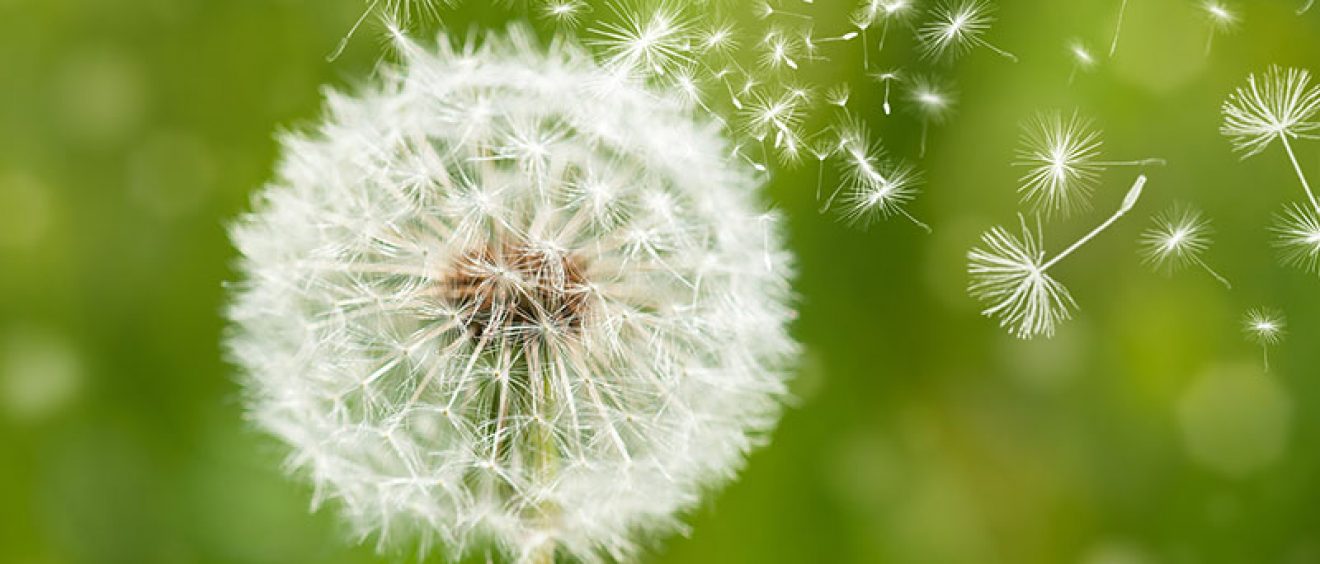
Yoga for Fatigue as the Season Changes
Summer has said it’s last goodbye for the year. The crispness and color of fall is upon us. With the season change comes the very real problem of fatigue for many who live in northern climes. It’s one of the more overwhelming symptoms of seasonal affective disorder and a troubling symptom for many as the hours of daylight fade.
Fatigue can have different qualities. It may feel physical (more muscular) or physiological (shortness of breath, no “mo-jo”, lethary) or cognitive (presenting as difficulty concentrating and processing information). It can be mild at one end of the spectrum or bone-numbing and paralyzing at the other extreme. A dandelion scattering its seeds is symbolic for the scattering of energy that comes with fatigue.
The ancient yogis devised models for understanding human energy and how to transform it. We can use these ancient models for the fatigue that comes with the season, health conditions, treatments, grief, or other factors that cause fatigue.
Breath-centered postures, breathing practices and relaxation/meditative practices have the greatest potential to help us transform fatigue. We can choose postures that build energy, adapt the breath in postures to awaken and nourish, or use breathing practices that feel awakening when we are tired or calm us when stress is depleting our energy reserves. We can also use yoga to become more sensitive to when we need more energy-conserving practice like relaxation or meditation.
Here are 5 ways to get started with yoga practice tools to transform fatigue:
- Awareness – track your fatigue level, stress level, work hours, leisure activities and lifestyle habits such as exercise and diet for 1 week to see if you notice any trends
- Asana – do a short practice of 1 – 3 postures to get going in the morning. Lengthen your breath over 4 – 6 repetitions of the posture. Standing postures are the most energizing but if your energy is really low, you may need to do something on your back or in a kneeling position.
- Breathe – when energy is low but you need to be present or productive, do 12 full deep breaths with Inhale = Exhale and a short 3 sec pause after Inhale. An example is: Inhale 6 sec, Pause for 3 sec after Inhale, Exhale 6 sec.
- Meditate – spend about 5 minutes visualizing light moving to every part of your body, especially the heart space, center of the head and hands and feet.
- Breath-infused Relaxation or Nap – systematically work through the body, sending a deep breath to each major part of the body (R arm, R leg, L leg, L arm, center of the head, center of the chest, belly, abdomen). Do 1st round with 1 breath, 2nd round with 2 breaths, 3rd round with 3 breaths. Continue until your body feels suspended in a deep state of relaxation and rejuvenation. Spend 5 – 10 minutes in this rejuvenation.
Fatigue is often transformed more by a variety of short practice tools that are “do-able” and not too energy-consuming than a monster practice. As your reserve of energy improves, you may be able to exercise more or add stronger yoga practices or begin to work with breathing practices that build your energy reserves. A yoga teacher or Yoga Therapist trained in the Vedic models of human energy can help you out.
It’s important to work with your health care provider if symptoms of fatigue feel overwhelming or are new without any discernible reason. If you have trouble functioning at work, home or in your volunteer work, your personal relationships suffer, and you have significant feelings of depression as a result of the fatigue, it’s time to talk with your doctor.
As you move toward the winter solstice, use your yoga practice to support and nourish steady energy and to transform fatigue when it presents itself.
